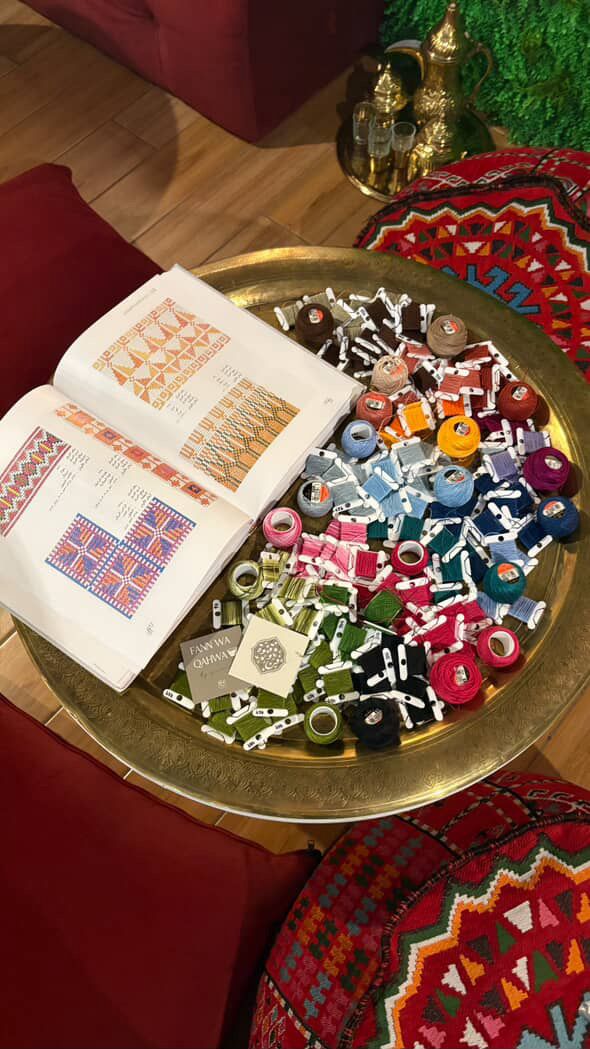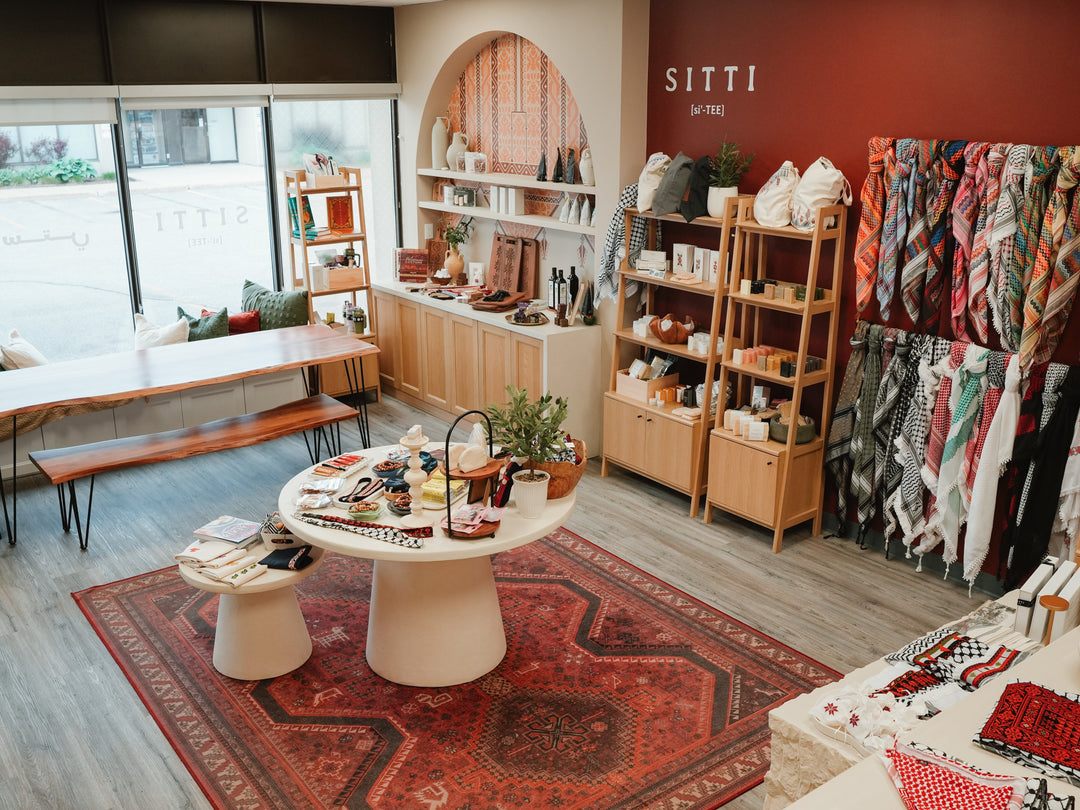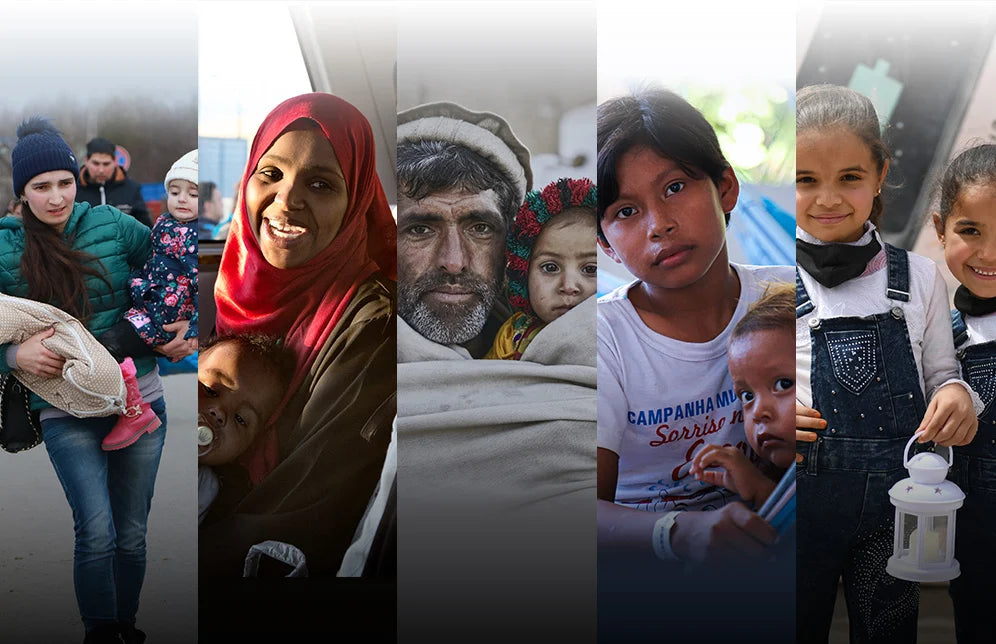Embracing Our Rituals (Part 2) - Tatreez

“I have a challenge for you…why don’t we spend the next 100 days doing tatreez?”
This is the opening line to one of Wafa Ghnaim’s latest posts on social media. Wafa, a scholar and researcher of art history, is the author of Tatreez & Tea. She is also the founder of the global initiative under the same name that is inspired by her mother, award-winning Palestinian embroiderer Feryal Abbasi-Ghnaim.
What is “tatreez?” Although it is commonly reduced to “Palestinian embroidery,” it is much more. Wafa explains on her website, it is “centuries-old folk art, traditionally passed from mother to daughter over a cup of tea.” When Feryal, Wafa’s mother, became a refugee after the 1948 War and during Al-Nakba, she took up the art of tatreez. Soon afterwards, she began to teach tatreez. It was not just a job. It was a way to cope with all the uncertainty of exile from her homeland, and then the prejudice as a Muslim immigrant in the United States.
 Photo credits (from left to right): 1 - Photography by Carlos Khalil Guzman, 2020, 2 - The Wheat Harvest Dress, 3 - Feryal Abbasi-Ghnaim, Photo by Jen Dougherty.
Photo credits (from left to right): 1 - Photography by Carlos Khalil Guzman, 2020, 2 - The Wheat Harvest Dress, 3 - Feryal Abbasi-Ghnaim, Photo by Jen Dougherty.
“She felt her stories were safe in tatreez,” Wafa explained about her mother, during a Q&A for the Boston Palestine Film Festival several years ago. Feryal taught her daughter that tatreez is a part of Palestinian identity “that can never be occupied or stolen.”
Hours and days are spent sewing and stitching these colorful and intricate patterns. The craftsmanship is taught from mother to daughter and passed on through generations, in the hopes that this ritual stays alive. Each pattern represents a region or village within Palestine. Some patterns are almost all that is left of places that are no longer acknowledged in present-day regional geography. Wafa has taken this one step further. Tatreez classes that emphasize learning patterns alongside their distinct histories advocate for honoring and preserving Palestinian heritage that would otherwise be lost. In response to a 2020 CounterPunch article by Omar Joseph Nasser-Khoury, Wafa published on her blog, “I often times select motifs from depopulated villages of 1948 to ensure that we stitch in commemoration and honor of our Palestinian ancestors. For instance, in my class where I teach students how to implement tatreez on their traditional Palestinian keffiyeh, we focus on a motif from Lifta. Lifta was violently depopulated in 1948 and has largely been abandoned since the creation of Israel.”
Wafa has taken this one step further. Tatreez classes that emphasize learning patterns alongside their distinct histories advocate for honoring and preserving Palestinian heritage that would otherwise be lost. In response to a 2020 CounterPunch article by Omar Joseph Nasser-Khoury, Wafa published on her blog, “I often times select motifs from depopulated villages of 1948 to ensure that we stitch in commemoration and honor of our Palestinian ancestors. For instance, in my class where I teach students how to implement tatreez on their traditional Palestinian keffiyeh, we focus on a motif from Lifta. Lifta was violently depopulated in 1948 and has largely been abandoned since the creation of Israel.”
Mass displacement of Palestinians from their homeland in 1948 inspired Palestinian women to preserve their identity through tatreez. During the First Intifada, Palestinian flags were confiscated. The only way the community could preserve their flags were by wearing them. As women started incorporating the Palestinian flag into their garments through tatreez, it evolved as an expression of social signaling and solidarity.
 Photo by Jenna Massoud
Photo by Jenna Massoud
As more Palestinians grow up in the diaspora, tatreez has continued to be a vehicle to showcase their rich history, traditions, and their resilience. And for those whose familial history may not have direct connection to the passed-down tradition of tatreez? There is always space to learn and listen. Tatreez is a way to communicate and tell stories that goes beyond traditional language. The more we understand and contemplate the meaning behind each intricate pattern, the more we learn about traditions and rituals of those who came before us; the more informed and nuanced our narrative of history becomes.
Since its creation in 2015, Tatreez & Tea has nurtured a global community through the art of tatreez. In a new era of isolation where we are all grasping for threads of belonging, the Tatreez and Tea community has been a haven for Palestinians and Palestinian allies, as well as many who are just eager to learn and grow in quarantine.
In Wafa's "100 Day Challenge," she encourages participants to stitch 3 threads a day or night (give or take). Maybe this is a way to motivate people to complete a larger project, bit-by-bit. Maybe it is a way to bring people closer together and feel connected in spite of being physically distanced.
...Maybe...just maybe...it's Wafa sharing the tool of her ancestors with her community, and showing us that there are rituals we can take up; rituals that can teach us resilience while also building it into our daily practice.
...which leaves us exclaiming…
“Yalla! Let’s tatreez!”

Thank you to Wafa Ghnaim and Feryal Abbasi-Ghnaim for sharing their story and ritual with the Sitti community. If you would like to read and learn more about Tatreez & Tea, sign up for one of Wafa’s upcoming tatreez workshops or purchase her book, visit the website here.
This post is part of a series on rituals practiced in the Palestinian refugee community where we work and live. If you'd like to read other posts on rituals, check them out here. Also, check out our Instagram page for more conversations and inspiration around this topic.





Leave a comment